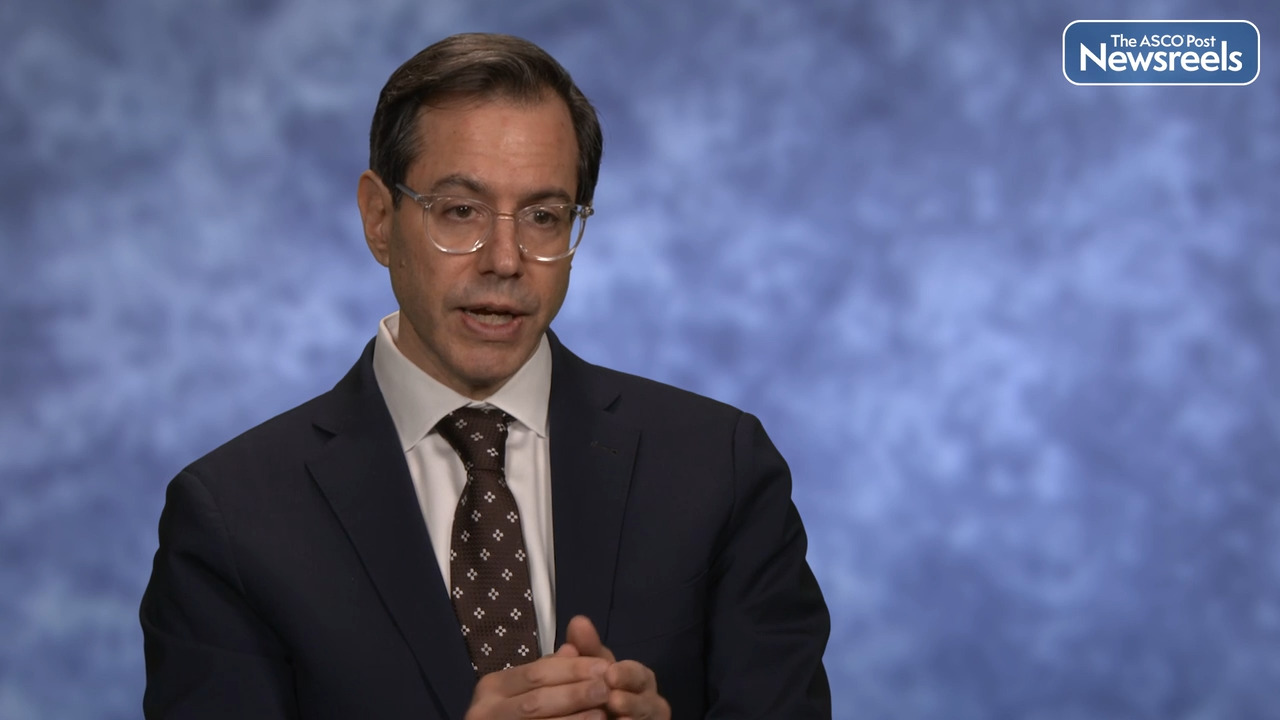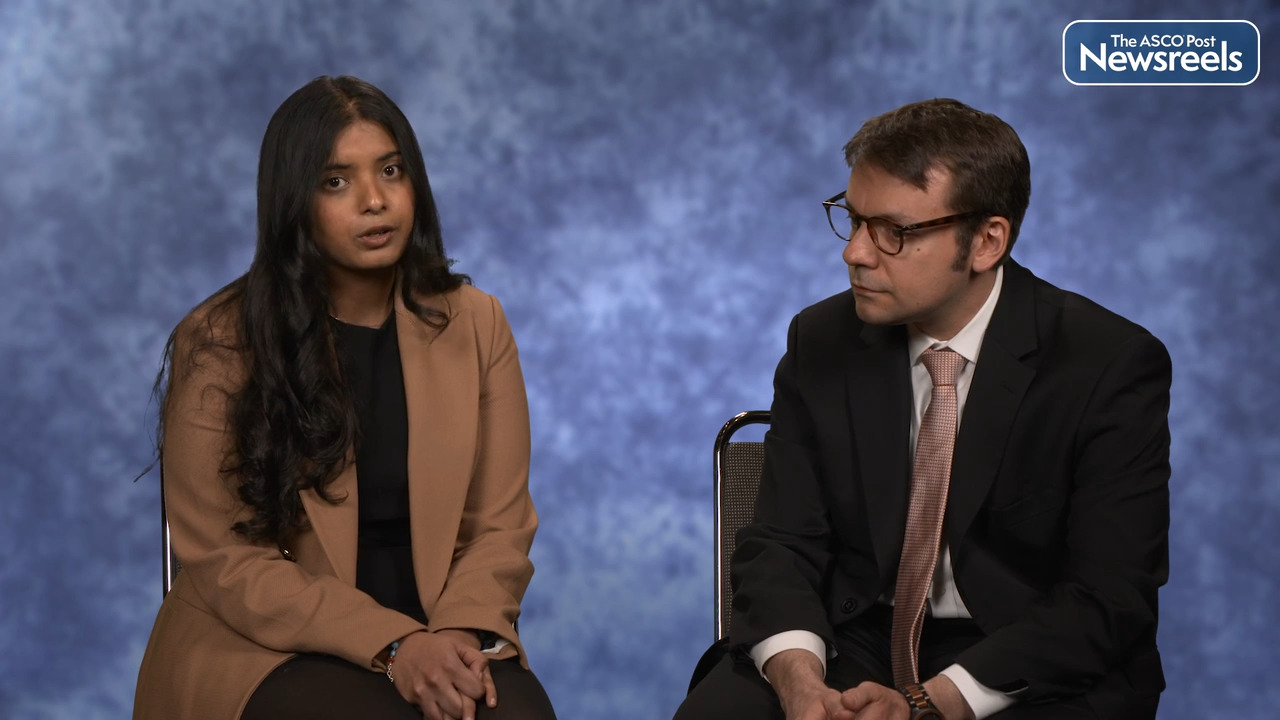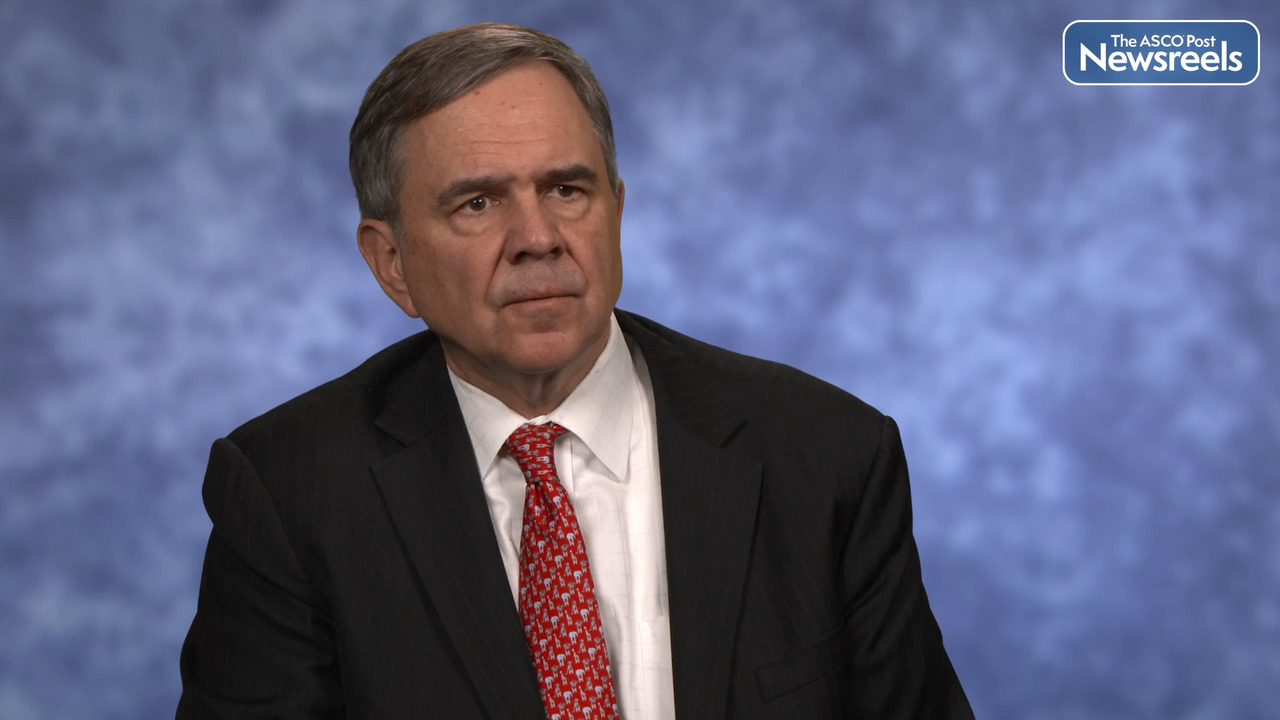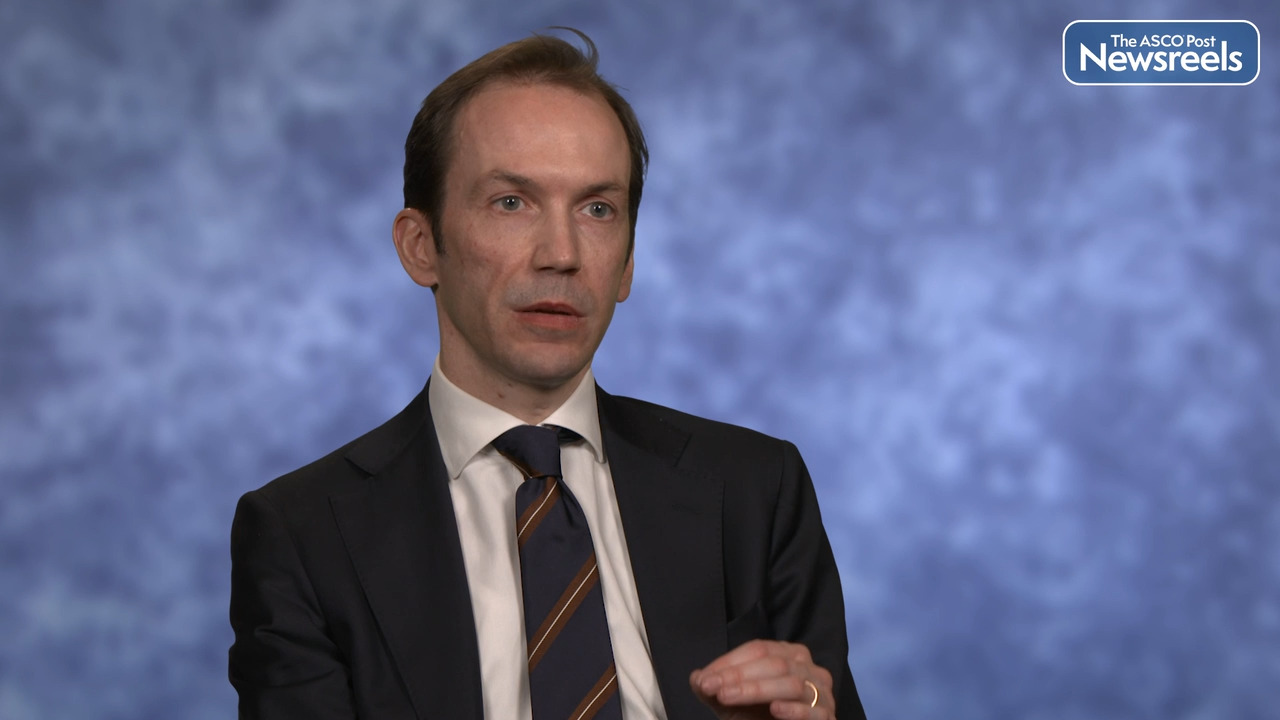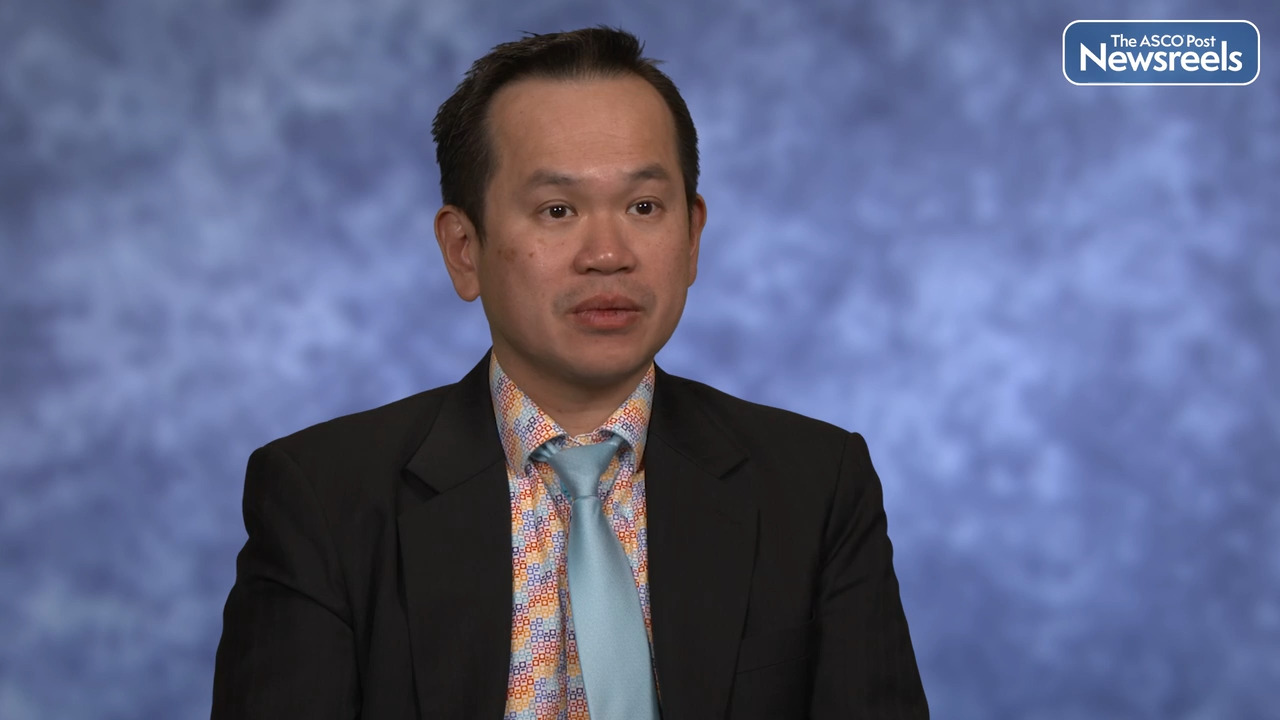Aristotelis Bamias, MD, on Urothelial Carcinoma: Final Overall Survival Analysis of Atezolizumab Monotherapy vs Chemotherapy
2023 ASCO Genitourinary Cancers Symposium
Aristotelis Bamias, MD, of the National and Kapodistrian University of Athens, discusses results from the phase III IMvigor130 study, which suggest that atezolizumab monotherapy continues to show better tolerability vs chemotherapy for patients with untreated locally advanced or metastatic urothelial carcinoma. (Abstract LBA441).
Transcript
Disclaimer: This video transcript has not been proofread or edited and may contain errors.
Treatment with immune checkpoint inhibitors is the standard of care in metastatic urothelial carcinoma after failure of platinum-based chemotherapy. The randomized phase three trial IMvigor130, ask the question whether there is a role for atezolizumab in first line treatment in patients with metastatic urothelial cancer. It randomized patients to get either atezolizumab plus chemotherapy, arm A. Atezolizumab monotherapy, arm B and platinum gem chemotherapy, arm C. The co-primary efficacy endpoints of these study was progression-free survival between arms A and C, so the combination versus chemotherapy and overall survival for the same comparison. The first co-primary efficacy endpoint was met, but the second was not. Therefore, the results that I presented are exploratory analysis rather than formal analysis of overall survival, and it is the final overall survival analysis for arms B and C. What the results showed, confirmed the results of previous interim analysis showing no difference in overall survival between atezolizumab and chemotherapy.
The median overall survival for atezolizumab arm was 15.2 months versus 13.3 months for chemotherapy alone. When there was analysis according to PD-L1 status, then the patients whose tumors did not express PD-L1 or expressed low levels of PD-L1 show no difference in survival between chemotherapy and atezolizumab. Nevertheless, in patients with tumor high expression PD-L1, there was a suggestion of progression for overall survival. The median overall survival for atezolizumab cause 27.5 months compared to 18.6 months for chemotherapy alone. And when we focused this analysis in cis-ineligible patients, then we found that this actually progression of survival was more pronounced with a median overall survival for atezolizumab 18.8 months versus 10 months for chemotherapy.
Safety analysis confirmed that tolerability is better with atezolizumab versus chemotherapy and without no new safety signals for atezolizumab in this analysis. So, in conclusion, our final overall analysis showed no benefit in survival from atezolizumab versus chemotherapy. Nevertheless, our exploratory findings suggest that there is a benefit for atezolizumab monotherapy in patients who are cis-ineligible with metastatic urothelial cancer, which expresses highly PD-L1. Of course, these results have to be seen in the context of the current standard of cure in metastatic urothelial cancer, which is chemotherapy, followed by avelumab maintenance in non-progressors. Nevertheless, our results both efficacy and also safety, suggest that in this population cis-ineligible metastatic urothelial cancer, high expression of PD-L1, atezolizumab still has a role to play as first line chemotherapy.
The ASCO Post Staff
Matt D. Galsky, MD, of the Icahn School of Medicine at Mount Sinai and Tisch Cancer Institute, discusses results from CheckMate 274, which investigated nivolumab compared with placebo in patients with bladder or upper urinary tract cancer, following radical surgery to remove invasive disease. (Abstract LBA443).
The ASCO Post Staff
Vadim S. Koshkin, MD, and Tanya Jindal, BS, BA, both of the University of California, San Francisco, Helen Diller Family Comprehensive Cancer Center, discuss results from the retrospective UNITE study of biomarkers of response to the antibody-drug conjugate enfortumab vedotin-ejfv in patients with advanced urothelial carcinoma. Enfortumab vedotin is used widely in treatment-refractory disease, but there have been limited data available on biomarkers that may predict outcomes with this treatment. The UNITE study has now identified several potential biomarkers that need to be validated to help inform clinical decision-making and therapy sequencing. (Abstract 450).
The ASCO Post Staff
Daniel P. Petrylak, MD, of the Yale Cancer Center, discusses phase III findings from the KEYNOTE-921 study, which was designed to assess the combination of pembrolizumab and docetaxel in the treatment of patients with metastatic castration-resistant prostate cancer. They had not received chemotherapy, but their disease progressed on the next-generation hormonal agent, or they could not tolerate the agent. (Abstract 19).
The ASCO Post Staff
Andrea Necchi, MD, of Italy’s Vita-Salute San Raffaele University and the IRCCS San Raffaele Hospital and Scientific Institute, discusses new data from the KEYNOTE-057 trial on a novel systemic therapy for papillary high-risk non–muscle-invasive bladder cancer. The findings suggest that patients whose disease does not respond to bacillus Calmette-Guérin or who declined or were ineligible for a radical cystectomy may benefit from pembrolizumab monotherapy. (Abstract LBA442).
The ASCO Post Staff
Paul L. Nguyen, MD, of Dana-Farber Cancer Institute and Harvard Medical School, discusses results from the FORMULA-509 study, which compared postoperative salvage radiotherapy and 6 months of GnRH agonist with or without abiraterone acetate/prednisone (AAP) and apalutamide, after radical prostatectomy. The study suggested that adding AAP and apalutamide to salvage radiotherapy, plus 6 months of androgen-deprivation therapy, may improve outcomes, particularly in the subgroup of patients with a prostate-specific antigen level higher than 0.5 ng/mL. (Abstract 303).
